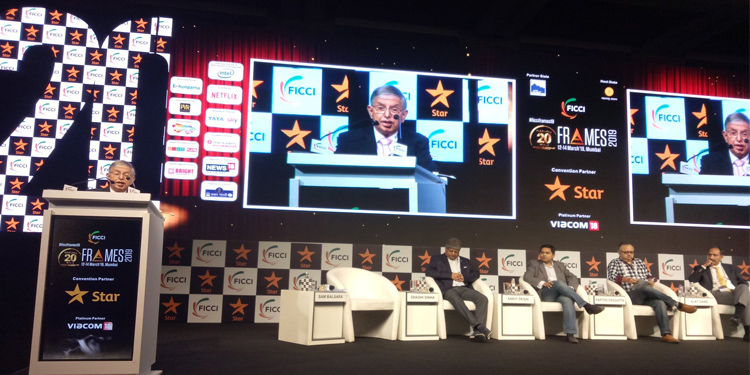By: Yohan P Chawla
Day Three at FICCI FRAMES saw a power-packed panel with industry stalwarts Sam Balsara, Sashi Sinha and Partho Dasgupta among others who discussed an overview of the major changes the entire advertising, media, marketing space has gone through in the past decade. Titled #10yearChallenge, the session was moderated by Sam Balsara, Chairman, Madison World.
In his interesting opening remarks, Balsara said, “As the Indian economy continues its onward march, the advertising market in India is bound to grow and remain the fastest growing advertising market in the world, as it is today, for some more years to come. We have seen the advertising market or what we call AdEx generally grows at twice the rate of GDP. So if we expect our GDP to grow from 6% – 7% every year over the next decade, then it is not unrealistic to expect our AdEx to grow by 12% – 15% over the next few years.”
“With all these changes around us, what remains the same is our quest to understand consumer behavior,” Balsara said, adding, “The more time and money we spend to understand them, the less we seem to know about them. Not only is the Indian consumer an onion with layers and layers of skin but an onion that is continuously changing in shape, color and size hence making the task for a marketer daunting. It also goes without saying that this exponential growth and supply of media has brought about multiple challenges for the marketer in building a brand and sustaining it. Brand building has become a hugely complex matter and to succeed one needs a good balance of both art and science which is a combination of a good left brain and very good right brain.”
On the recent challenges media agencies have been facing, Shashi Sinha, CEO, IPG Mediabrands, said, “The big challenge which we face as a media agency is how to decide to look at digital as a medium — whether in the context of measuring audiences or communicating to audiences. A lot of times performance is linked to outcomes, so I think the balance becomes difficult, to figure out what role each medium plays in the communication design.”
On the after-effects of TRAI’s New Tariff Order (NTO), Partho Dasgupta, CEO, BARC, said, “The New Tariff Order has asked to people to exercise their choice. The entire broadcast space is going through a migration as we speak. In television there are different problems, and in the DTH space there are different problems. I think we will take a couple of weeks more to reach some level where we can say that some amount of stability or a new normal can happen. The other big shift is happening on the free platforms where channels are coming in and going out. So frankly speaking, we will go through a lot of changes in the next couple of months.”
Emphasizing on the mediums of storytelling, Ajay Dang, Joint Executive President, Head- Marketing, Ultratech, said, “At a very basic level as a marketer I see my job has two parts – the first is listening, and the second is story-telling. The story needs to be carried across multiple mediums and we need to understand the rules of the medium as to how the story needs to be told.”
“However, the thing that worries me most,”Dang said, “is that I am not so sure that we as marketers or creative people have understood enough as to how that story-telling needs to change. Second, whether the benefits that we are deriving out of the story-telling are equally tangible in its outcome. Third, I would tend to believe I don’t think we have done ourselves too much service by marketing some of these things in a fairly isolated fashion.”
Speaking on the change the FMCG space has gone through with respect to advertising, Ankit Desai, Head – Media & Digital Marketing, Marico, said, “Ten years ago there were just three priorities that we had as an FMCG company from a media standpoint: we used to look at efficiency, effectiveness and some amount of innovation. I think today we are at a stage where we are pretty much in a scenario where we are democratizing data. And that data plays a large role in understanding our consumer.”

















